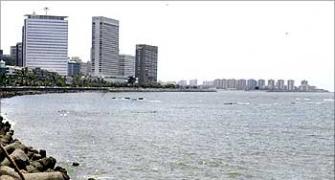 From Earth Hour to LEED ratings for buildings, from carbon footprint to carbon credits, the world is climbing onto the 'green' bandwagon, says Suparna Bhalla.
From Earth Hour to LEED ratings for buildings, from carbon footprint to carbon credits, the world is climbing onto the 'green' bandwagon, says Suparna Bhalla.
Is it 'green' if I plant 100 trees, take an economical shower and then walk to work? How many trees will I have saved from oblivion? How much oxygen will that add to the depleted atmosphere? And so on.
Consumer guilt seeks paths to green redemption via SMS campaigns, conferences and marketing gimmicks. Here let us step back and ask ourselves what 'green' means, before we go looking for solar cells and mud bricks. Is it the colour or is it the connotation?
Through the ages 'green' has been identified with several things: fertility, progress, youth and even sickness and envy. Yet its implications today have to do with the environment and energy. Both meanings arise from the colour itself, as it conjures up images of forests and leaves, grass and fields.
However, what if I challenged this notion today? Could green be blue, grey or even brown? The answer to this apparently absurd question is an equally absurd affirmative.
Green can be any colour in the spectrum of light - because today it is more related to 'being responsible' than to the wavelength it occupies in the energy spectrum. Thus you are 'green' every time you make a responsible decision through, or even by, design.
Your green quotient rises every time you repair a leaky tap, turn the lights off when you leave a room, avoid throwing trash onto the street, smoke fewer cigarettes, support your neighbourhood children's play area, or push your boundary wall in to accommodate your street parking.
Your green becomes blue when you allow the sky to be part of your home, as you ventilate it with courtyards. It is brown when you choose to reuse your newspapers to line your cupboards. It is grey when you recycle rainwater to wash your cars with. Green changes colour yet remains the same in context - it's always environmentally responsible.
Green today is entering a new realm, becoming part of everyday life. You don't have to live in a solar-powered home to be green. You can live in one where you use energy-efficient fluorescent lamps.
You don't have to work in a totally non-airconditioned office. You can work in one which minimises energy for airconditioning by optimising orientation, technology and even time of use.
Your home need not compete with the Amazon jungle in plants - you can discard plastic in your kitchen. You don't have to eat organic food - you can opt for locally grown food.
Every time you choose a cloth bag over a plastic one, or promote your local crafts, or contribute to your local school or even set up a crèche for the labour on the construction site of your new house, you are being green.
I would go so far as to say that the sharing of ideas, information, technology and intellectual property is green when it represents an attempt to change the world and contribute to the shrinking of differences and disparities.
Green is having ramps for the handicapped, and better fire codes. Green is giving your seat to an elderly fellow passenger in a bus. Green is allowing an ambulance to overtake you in traffic. Green is getting offended every time you see someone spitting or defecating on the road.
Green is a choice you make for every moment. It is no longer about the colour but the civic consciousness that comes from assuming the whole world is your home.
Eventually, it is not about extremes but about striking balances where we find the middle ground between our 'needs' and our 'wants'. Thus yesterday's green is tomorrow's blue, red, brown, gray, purple...(The writer is a Delhi-based architect.)








